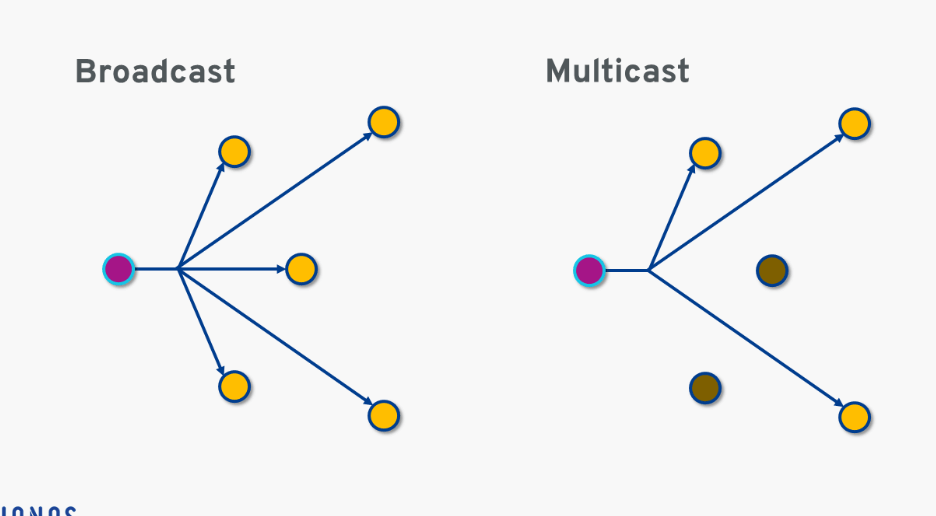In computer networking, multicast is a communication technique that transfers data from a single sender to several destination devices. Its characteristics define its usage: a server transmits each packet only once, and all recipients receive it. This makes it an efficient method for managing network traffic and delivering data to multiple receivers at once. This article will examine how multicast networking works.
How Multicast Networking Work?
Group Management and IP Multicast Addressing
The IP multicast operation is based on group addresses, which are used by both the sources and the receivers. In multicast networking, sources transmit packets to this multicast group, while receivers receive the transmitted data packets using the Internet Group Management Protocol (IGMP) for IPv4 or Multicast Listener Discovery (MLD) for IPv6.
My IP address, visible on the What Is My IP website, uniquely identifies my device for direct communication, contrasting with multicast networking, where both sources and receivers use group addresses for efficient data transmission and reception via protocols like IGMP or MLD.
Multicast Routing Protocols
Multicast routing determines the direction of data transmission by taking the source address into account, whereas unicast routing does not. Protocols such as Protocol Independent Multicast (PIM) establish multicast distribution trees to efficiently transmit the data from senders to all receivers in a multicast group. These protocols allow the dynamic establishment and maintenance of multicast trees through receiver subscriptions.
Configuration of Hardware and Network Cards
Network cards set up for hardware multicasting recognize specified multicast MAC addresses. A packet addressed to a multicast MAC is forwarded to higher layers for processing when a network device detects it, differentiating it from unicast packets that are directed to a specific computer or MAC address.
Advantages of Multicasting
The following are some advantages of using multicasting:
Reduced Bandwidth Requirements
Multicasting reduces the quantity of bandwidth required for streaming video, voice, or data over the network. The bandwidth requirements are reduced because multicasting transmits a single stream of data instead of multiple streams.
Smooth Transformation Path
Multicasting is compatible with current single-stream broadcasting technology and does not require the investment of separate equipment for new users on the network.
High Quality of Service
Multicasting transmits data to numerous destinations without affecting the quality of any given stream. This is referred to as a uniform quality of service. Without compromising its final quality, this system divides the data into smaller components and transmits them in parallel.
Better Network Bandwidth Usage
Multicasting’s bandwidth consumption remains constant regardless of the number of receivers on the network. Under high-load conditions, this releases unused bandwidth as additional users connect to the network.
Fault Tolerance
In a multicast network, the use of a single source node for multiple broadcasts improves fault tolerance. The remainder of the multicast group can continue to receive messages through the remaining streams in the event that one stream fails over at a multi-server site.






